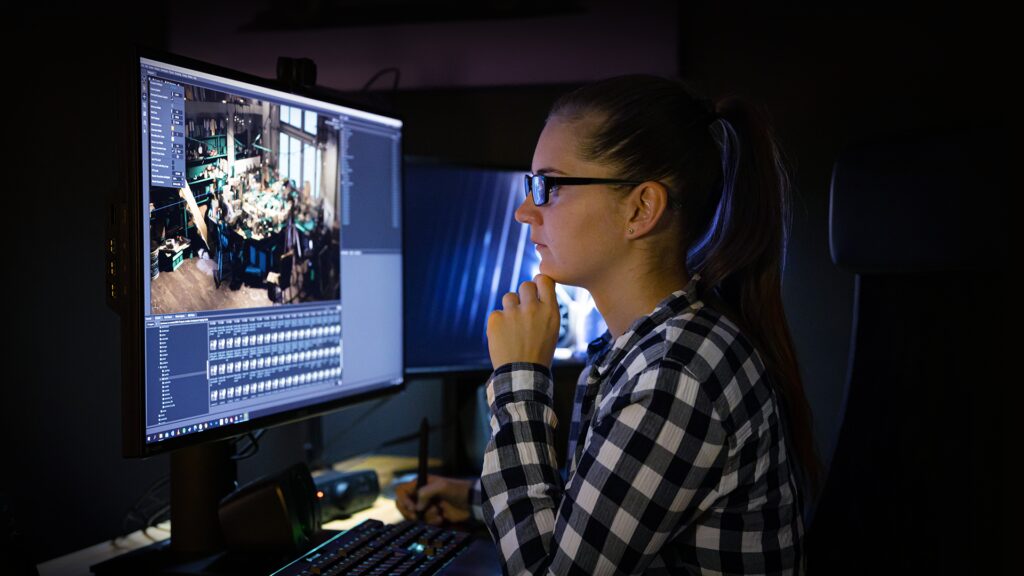Game development is a complex process that involves the use of various tools and technologies. The process begins with conceptualization and design, which involves using software such as Photoshop, Sketch, and Illustrator to create visual designs of characters, worlds, and objects. Game engines such as Unity and Unreal Engine are often used to make programming more efficient. Art and sound play a critical role in creating an immersive game experience, and tools such as 3D modeling software, animation tools, and sound design software can be used. Finally, the game is tested in Quality Assurance before deployment via distribution platforms such as Steam and the Apple App Store. New technologies such as cloud computing, artificial intelligence, and virtual and augmented reality will play increasingly important roles in game development in the future.
Inside the Game Developer’s Toolkit: A look at the Tools and Technologies That Help Create Immersive Game Worlds
Introduction
Video games have come a long way since the days of Pong and Space Invaders. Today’s games feature stunning graphics, complex storylines, and immersive environments that transport players to fantastical worlds. But have you ever wondered what goes into making these games?
Game development is a complex and multi-faceted process that involves the use of many different tools and technologies. In this article, we’ll delve into the game developer’s toolkit, exploring the processes and software that make it all happen.
Step 1: Concept and Design
Before any code can be written, game developers must first come up with a concept and design for their game. This involves brainstorming ideas, creating storyboards, and mapping out game mechanics.
To aid in this process, game developers often use software such as Photoshop, Sketch, and Illustrator to create artwork and visual designs of characters, worlds, and objects. 3D modeling software such as Maya and Blender may also be used to create more complex designs.
Step 2: Programming
Once the design is finalized, the programming stage begins. This involves writing the code that will bring the game to life. Game developers may use a variety of programming languages such as C++, Java, and Python to create the game’s mechanics, AI, physics engine, and more.
To make this process more efficient, game engines such as Unity and Unreal Engine are often used. These software solutions provide developers with pre-built tools and frameworks, which can significantly speed up the development process. Game engines provide rich graphical interfaces, scripting languages, and tools for managing assets, such as animations and sound effects.
Step 3: Art and Sound
Art and sound play critical roles in creating an immersive game experience. Game developers may use a variety of software tools to create game artwork, including 3D modeling software, animation tools, and texture creation tools. Sound design is equally important, and tools such as Audacity and Fmod can be used to create and manage sounds and music for the game.
Step 4: Quality Assurance
Once the game has been built, it’s time to test it to ensure it’s functioning correctly. Quality Assurance, or QA, is a critical part of the game development process, and game developers often use a suite of tools to test everything from graphics and sound to gameplay and functionality as a whole.
Step 5: Deployment
Once the game has been tested and any issues have been addressed, it’s time to deploy the game. This involves creating an executable file that players can download and install on their devices. Game developers may use distribution platforms such as Steam, the PlayStation Store, or the Apple App Store to reach audiences around the world.
The Future of Game Development
The game development process is constantly evolving, and new technologies and tools are being developed all the time. Cloud computing, Artificial Intelligence, and virtual and augmented reality are all set to play increasingly important roles in the game development process in the coming years.
Conclusion
The game developer’s toolkit is vast and complex, with many different tools and technologies used throughout the development process. From conceptualization to design to programming, art, and sound, each step requires specialized software and skills. Understanding the game development process can help players appreciate the incredible amount of work that goes into creating the games they love.
